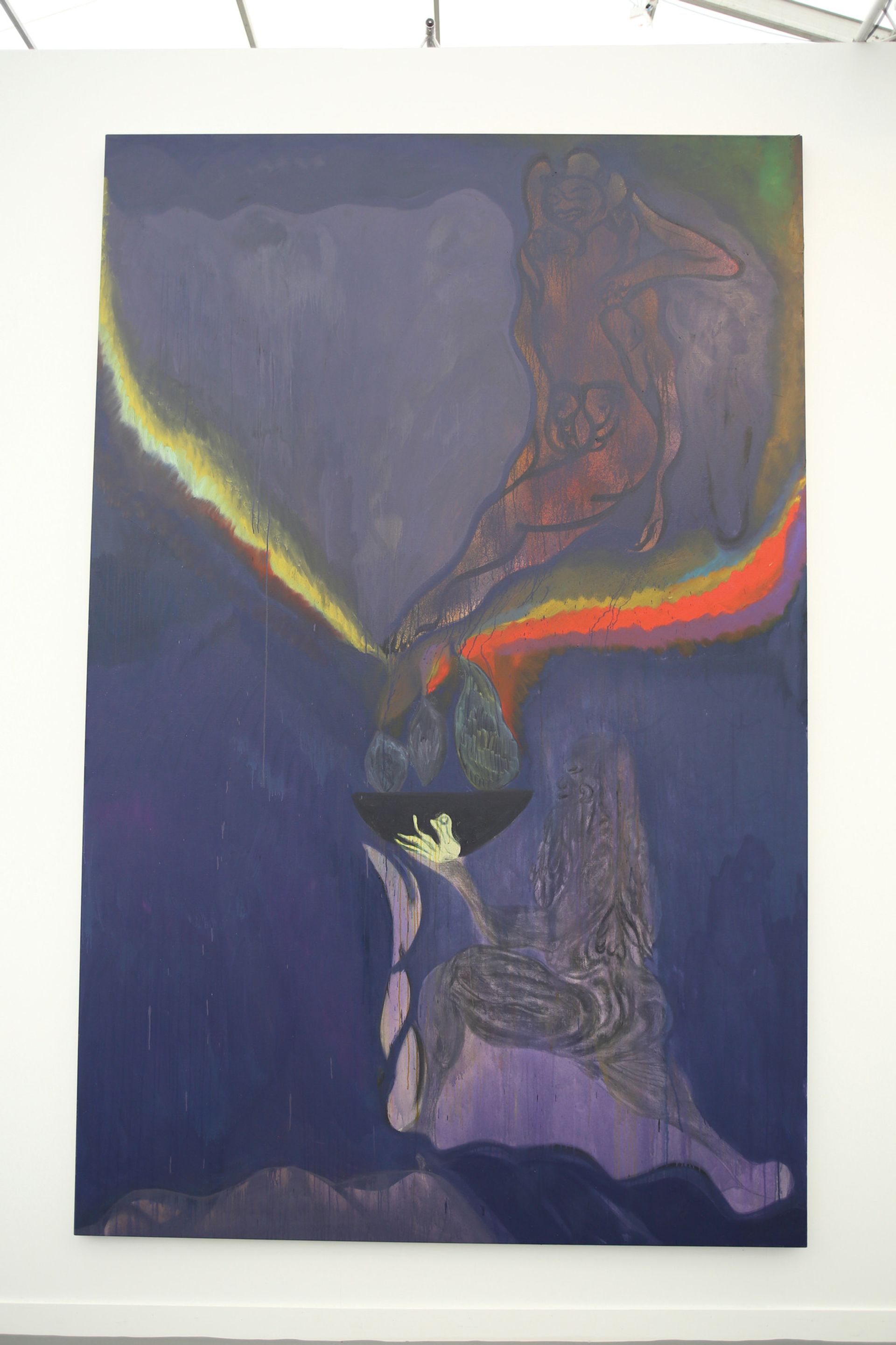Dealers at Frieze New York are taking advantage of the Venice Biennale effect, after the world’s most prestigious international art exhibition opened last week, a month earlier than usual. Traditionally, Art Basel in June benefited most from the Biennale (until 22 November), as collectors bounced from Italy to the Swiss fair. “The old credo ‘see in Venice, buy in Basel’ is up for revision,” Olav Velthuis, the author of Talking Prices, told us.
Victoria Miro (B3) has dedicated almost all of its stand to artists who are showing in Venice. Works by Joan Jonas, who earned a special mention from the Biennale’s jury, are on offer with Gavin Brown’s Enterprise (B38), Wilkinson Gallery (D26) and Galleria Raffaella Cortese (A10). “She is representing the US in Venice, so it would be a bit stupid not to have her work here,” says Gavin Brown, who is showing a set of 58 drawings priced at $350,000.
Inclusion in the Biennale is a seal of curatorial approval—and collectors take notice. “The exposure is so important for mid-career artists,” says Jessica Witkin of Salon 94 (B52), which sold Lorna Simpson’s Right Back At You (2015), priced in the low six figures. The painting is part of a series that was first shown in Venice. Galerie Eigen + Art (C24) sold Parafulmine mobile (2015), a sculpture by Olaf Nicolai, who is showing in the German pavilion, for €12,000.
The Biennale has a strong political tone this year: Isaac Julien organised a public reading of Karl Marx’s Das Kapital for All the World’s Futures, the main exhibition. At the fair, Victoria Miro is offering Julien’s photograph MIDNIGHT SUN (Playtime) (2013), priced at $57,000. Unlike Venice, Frieze is “not at all interested in the world’s problems,” says the Belgian collector Alain Servais.
On a practical note, the most ambitious projects in Venice cannot easily be translated to an art-fair booth. In All the World’s Futures, Katharina Grosse built a massive, debris-filled installation covered in paint. At the fair, Galerie Johann König (D18) sold her painting o.T. (2014), priced between €50,000 and €60,000.
Fairs are not designed to give a sense of an artist’s body of work. “In Venice, Jonas’s drawings are related to video, performance—it’s really mixed-media,” says Chiara Tiberio of Galleria Raffaella Cortese, which is offering drawings made by the artist during a performance last year, priced at $25,000. “In a fair, it’s just a drawing; it’s reductive, in a way.”
“I’m not looking for an overarching theme at an art fair,” says Jeremy Strick, the director of the Nasher Sculpture Center in Dallas. “I’m hoping to discover new things at biennials and art fairs, but… I attend fairs to remain conversant with the market.”
Le Guern Gallery (A3) is showing diptychs on paper, priced at $5,000 each, by C.T. Jasper, who is representing Poland at the Biennale. Agata Smoczynska, the gallery’s founder, says that the artist’s work in Venice—a video installation created with Joanna Malinowska that drew 4,500 visitors in one day—“needs an institutional context”. One of the video’s five editions has been acquired by Warsaw’s Zacheta National Gallery of Art.
Open for business Some dealers are not interested in promoting the Venice connection. They want to avoid overburdening artists, many of whom created new work for the Biennale. Others do not want to appear to be capitalising on what is meant to be a non-commercial event. “There’s a certain integrity to these curated events, and it’s not right to commercially push it,” says Thaddaeus Ropac (C40). At the fair, he sold three paintings by Elaine Sturtevant, including Warhol Flowers (1965), to one collector for a total of €550,000, and Anna (2015), a portrait by Alex Katz, for $425,000. Neither artist is included in the Biennale.
Today, however, the distinctions between commercial and non-commercial shows are collapsing. “There were a lot of jpegs emailed around before the Biennale, and sales were taking place at the opening gate,” says Todd Levin, the director of Levin Art Group. Dealers often help to finance production, shipping and the promotional costs of work commissioned for Venice. It is an open secret that most works are for sale. The dealer Jack Bell, who is participating in the 1:54 fair this week, sold works included in the Biennale by Lavar Munroe.
Both events demonstrate the event-driven nature of the art world. “There is no big difference between walking along the Arsenale or through Frieze,” says Max Hollein, the director of the Städel Museum in Frankfurt. “The endless succession of cocktail receptions and dinners makes the two feel very alike. And it seems boat rides become a fixture if you are going to Venice, Istanbul or whatever biennial or to Frieze New York.”
In Venice—and on Randall's Island too Elmgreen & Dragset, He (Copper Green) (2013)

This statue, priced between $100,000 and $150,000 (Victoria Miro, B3), is part of a series of mermaids by the artists. In Venice, a sculpture of a diving board is on show in the Punta della Dogana, François Pinault’s exhibition space.
Chris Ofili, Ovid-Windfall (2011-12)

Ofili’s paintings have a room to themselves in the Venice Biennale’s main exhibition. This work, priced in the mid-six figures, had sold at Victoria Miro by Thursday afternoon.

